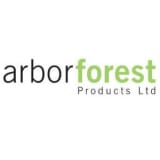This informal CPD article ‘Decking and decarbonising: how to keep outdoor living as sustainable as possible’ was provided by Arbor Forest Products, one of the largest independent timber importing businesses in the UK, providing outstanding service and distribution to merchants.
In recent decades, the UK has seen a growing trend for maximising and upgrading outdoor space – both within private homes and commercial spaces such as hotels, restaurants, and cafes. This has triggered a phenomenal rise in the popularity of outdoor decking – whether that is timber or, increasingly, composite decking products.
However, the current focus on sustainability and reducing the environmental impact of all domestic and commercial renovation or construction projects means that designers and contractors are increasingly considering their carbon footprint in all areas – including decking.
Is wood good?
As a natural material, it may seem that timber decking is the most environmentally conscious option. When using timber from well managed forests, which is Forest Stewardship Council (FSC) certified or which carries Programme for the Endorsement of Forest Certification (PEFC) status, installers can be reassured that the timber itself is as sustainably sourced as possible.
However, timber decking comes with its own issues, needing considerable maintenance over the years that requires both energy and the use of chemicals. Not all wood-stains or treatments can claim to be environmentally friendly, and using sanders and other machinery to keep a timber deck in good shape can affect the operational carbon of a project at a time when scrutiny of whole-life environmental impact is on the up.
So what is the solution? Thankfully, high-quality composite decking offers both sustainability and longevity, without the need for regular upkeep.
How green can it be?
Firstly, it is important to point out that the composite decking market has expanded considerably in the past five years alone, with a host of new decking boards – of varying quality – flooding onto the UK market.
Installers, homeowners, and specifiers should conduct thorough research into the quality and type of decking board on offer, especially where sustainability is an important factor. The best quality options are solid-core composite decking boards. These boards have excellent environmental credentials as well as offering a guaranteed staying power when correctly installed.
This type of solid-core decking– and fascias – offer several advantages, not least in terms of the materials used for manufacture. Some decking boards are made using up to 95 per cent recycled materials, including both post-consumer wood and plastic waste such as plastic bags or packaging, which can be tricky to recycle and would usually be destined for landfill.
Increasingly, composite decking brands are taking steps to further reduce the impact of their manufacturing processes. This could be by recycling scrapped boards back through the factory, or even recycling water using sophisticated closed-loop recirculation systems to reduce water use.
What’s more, composite decking requires minimal maintenance. The very best decking boards come with lengthy warrantees of up to 25 years, and will not warp, split or fade - meaning that there is no need for chemical treatments like staining or painting. As they are built to last, they do not need to be sanded, polished, or planed, saving electricity as well as manpower.
Transport matters
Of course, for plenty of outdoor materials – from timber to stone – carbon footprint can be affected by importing and transportation both in the country of manufacture, and within the UK. Manufacturers are increasingly turning to more environmentally sound transport policies, including transport by rail rather than road, or adapting their practice to deliver raw materials direct to the factory site rather than storing them off-site first.
Installers should be mindful of working with suppliers which have put in place measures to ensure that the carbon footprint of deliveries is kept down too. By working with suppliers who use low-carbon vehicles, and endeavour to only ship when a vehicle is full, the carbon footprint of the whole project will be kept to a minimum.
We hope this article was helpful. For more information from Arbor Forest Products, please visit their CPD Member Directory page. Alternatively, please go to the CPD Industry Hubs for more CPD articles, courses and events relevant to your Continuing Professional Development requirements.













